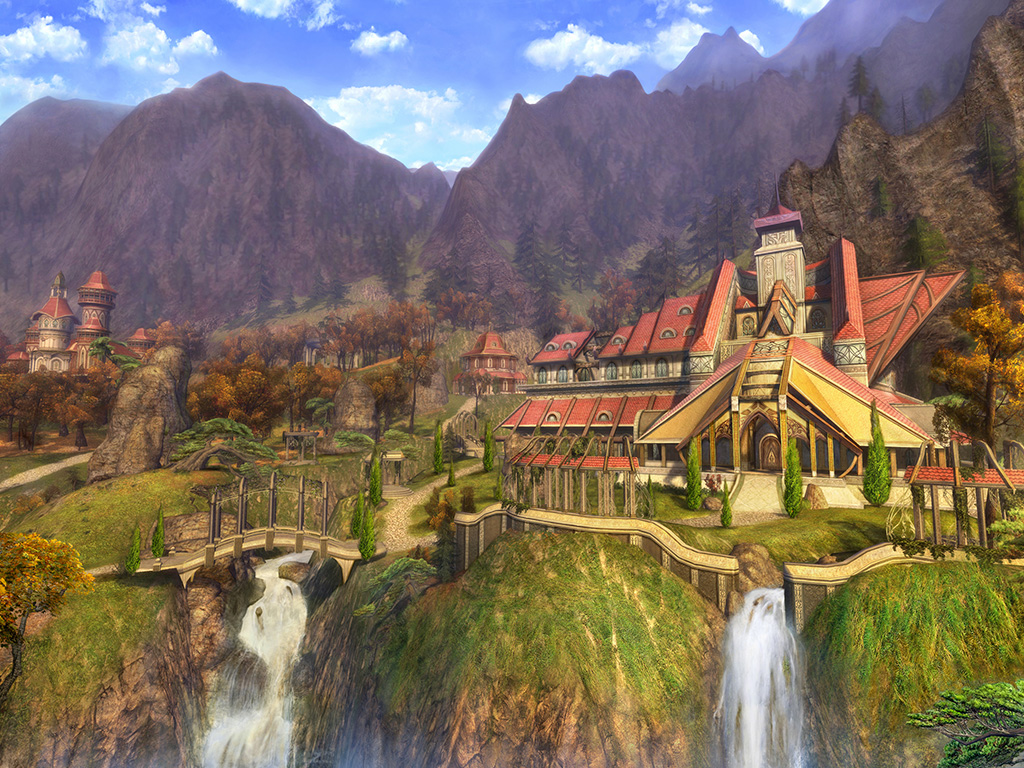
Lord of the Rings Online is a Massively Multiplayer Online (MMO) game, set in Tolkein's Middle Earth. I was hired in the first months of production as the UI designer and artist. After time on the user interface for the game, I moved into the Lead Artist position to assist and supervise other asset development. Recreating Middle Earth was an enormous task, and finding ways to support an arbitrary number of local characters of good fidelity was a challenge.
I transitioned to Lead Artist in the process of assessing the in-development appearance of the game after my arrival at Turbine. The world was looking dull and desaturated, with little attention being paid to guiding the user through the world visually:






Early screenshots of Lord of the Rings Online development, when I was first brought onto the project. Overall saturation and color variety was low, no effort was being made to texturally distinguish different kinds of content, and texture luminosity was not well managed, so lighting was a challenge for the world builders. In becoming Lead Artist, I demonstrated some procedural and strategic changes to improve the overall visual appeal of the game.






This is the course I set LOTRO on in becoming Lead. Saturating the world while still keeping things grim where necessary, drawing attention to areas of focus with standard lighting techniques and color theory, and overall making the game more visually appealing.
I continued in this mode after I was promoted to Art Director.
After launch, the game was updated with new content and features quarterly, greatly expanding on the world. In addition to the live updates, I directed the first two commercial expansions to the game, The Mines of Moria and The Siege of Mirkwood. Expansions came with significant additions to the world landmass, as well as new character classes and new level caps.


The challenge with Moria was to find ways to make adventuring in a giant cave for several levels worth of character progression not feel overwhelming with the darkness and dank atmosphere. Finding different ways to display the environment with color and saturation, while still giving the proper feel, required constant assessment.
Mirkwood was bleaker than most areas: with a sufficiency of color and saturation in most of the world, going to a low saturation mode actually made sense. With as many forests as LOTRO has, giving each its own character required planning.
The Mines of Moria presented an interesting technical challenge, to create a vista-scale underground environment. The Turbine G3 engine is a heightmap landscape engine, and did not, at the time, support overhang geometry. It has a modular dungeon system, as well, for interiors, but the limits of this system prevented doing anything of significant scale. This was tested and confirmed in our production of the GoblinTown environment, prior to Moria development, and it taxed the dungeon system to its limits. It was not going to be the solution for Moria.


My suggestion, which became the implementation, was to create a second inverted landscape mesh, to use as the ceiling of the mines. The ceiling could be lowered and the ground raised to intersect and form walls of caverns, and the overall performance envelope of the game was barely affected. It required a modest increase to the landscape vertex data, but was the only real solution to produce the environment the game required.